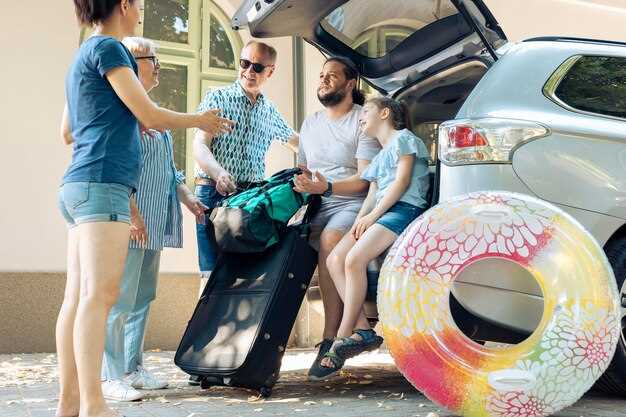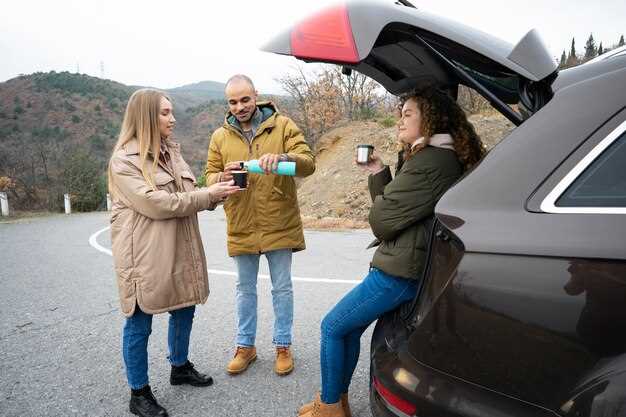Are Jeeps safe for families?


When it comes to choosing a vehicle for your family, safety is often the top priority. For many, the rugged appeal of a Jeep can be quite enticing, but how do they stack up in terms of safety ratings and crash performance? Understanding the safety features, design elements, and overall ratings of these vehicles is crucial for any family considering a Jeep for their daily needs.
Crash tests conducted by organizations such as the National Highway Traffic Safety Administration (NHTSA) and the Insurance Institute for Highway Safety (IIHS) provide valuable insights into the safety of vehicles. These ratings assess various aspects, including crashworthiness and the effectiveness of safety systems in protecting occupants. It’s essential to examine how different Jeep models fare in these assessments, as safety can significantly influence family travel and peace of mind.
In this article, we will delve into the specific safety ratings of popular Jeep models, analyze their performance in crash tests, and explore the features that make them a safer choice for family use. By the end, you’ll have a clearer understanding of whether a Jeep is the right vehicle for your family’s needs.
Understanding Crash Test Ratings for Jeep Models

Crash test ratings play a crucial role in assessing the safety of vehicles, especially for families considering a Jeep model. These ratings are determined by various organizations, including the National Highway Traffic Safety Administration (NHTSA) and the Insurance Institute for Highway Safety (IIHS). Each agency conducts rigorous evaluations to simulate real-world crash scenarios, providing insights into how well a vehicle protects its occupants during an accident.
For family-oriented buyers, understanding these ratings is essential. High ratings indicate that a Jeep model has performed well in tests that measure the likelihood of injury in frontal, side, and rear-impact collisions. The ratings often include a star system or letters ranging from “Good” to “Poor,” giving potential buyers a clear picture of safety performance. A vehicle with excellent crash ratings is more likely to safeguard passengers, making it a more viable option for families.
Jeep models are frequently engineered with advanced safety technologies, such as crumple zones, airbags, and stability control systems, contributing to their favorable crash test results. These innovations help mitigate the impact forces during an accident, enhancing the overall protection for families. Review the specific ratings for different Jeep models to make an informed decision based on safety priorities.
Furthermore, it’s important to note that while crash test ratings are vital, they should be considered alongside other safety features, such as driver assistance technologies. Features like automatic emergency braking and lane-keeping assist can further enhance the safety profile of Jeep vehicles, ensuring that families not only have a reliable means of transportation but also peace of mind on the road.
Key Safety Features in Modern Jeeps for Family Travel
Modern Jeeps are designed with the safety of families in mind, integrating various features that enhance protection during travel. One of the most critical aspects is the crash test ratings provided by safety organizations. These ratings help families assess the overall safety performance of vehicles in case of an accident, ensuring that they choose a model with a proven track record.
One significant safety feature in today’s Jeeps is the Advanced Airbag System, which includes front, side, and curtain airbags. This multi-layered protection helps cushion occupants from impact during a crash, significantly reducing the risk of injury for all family members.
Additionally, modern Jeeps are equipped with Electronic Stability Control (ESC), which assists drivers in maintaining control during challenging driving conditions. This feature is crucial for families who may encounter adverse weather or uneven terrain, as it helps prevent skidding and loss of control.
Another important aspect is the inclusion of Rearview Cameras and Parking Assist Systems. These technologies provide a clearer view of the area behind the vehicle, helping to prevent accidents while reversing, which is especially beneficial for families with young children who may be playing nearby.
Furthermore, Child Safety Seat Anchors are integral in modern Jeeps, allowing families to securely install child safety seats. The availability of multiple anchor points ensures that children are properly restrained, complying with safety regulations and protecting them during travels.
Lastly, many Jeep models come with Adaptive Cruise Control and Lane Keeping Assist, which help maintain safe distances from other vehicles and prevent unintentional lane departures. These technologies assist drivers in staying attentive, reducing the likelihood of accidents on long family road trips.
In conclusion, the combination of robust safety features, high crash ratings, and advanced driver assistance technologies make modern Jeeps a reliable choice for families seeking safe travel options.
Comparing Jeep Safety Levels with Other Family SUVs

When selecting a family SUV, safety is a top priority for many parents. Jeep models have long been celebrated for their rugged design and off-road capabilities, but how do they stack up against other family-oriented SUVs in terms of safety? Crash test ratings, safety features, and overall reliability are essential factors to consider.
Most Jeep vehicles, such as the Jeep Grand Cherokee and Jeep Wrangler, perform well in crash tests conducted by organizations like the National Highway Traffic Safety Administration (NHTSA) and the Insurance Institute for Highway Safety (IIHS). These models frequently receive commendable ratings for their crashworthiness, which is crucial for families concerned about protection in the event of an accident.
In comparison, other family SUVs like the Honda CR-V, Toyota RAV4, and Ford Explorer also boast impressive safety features and ratings. These vehicles often come equipped with advanced driver-assistance technologies designed to prevent crashes before they occur. Features such as adaptive cruise control, lane-keeping assist, and blind-spot monitoring are increasingly common across various families of SUVs.
While Jeep offers robust built quality and off-road performance, some family SUVs prioritize safety technology to provide comprehensive protection. For instance, the Toyota RAV4 includes a standard suite of advanced safety systems, which enhances its appeal to families looking for an all-round safe vehicle.
Ultimately, parents must weigh the distinct advantages of Jeep’s ruggedness against the cutting-edge safety technologies offered by competing family SUVs. Each option presents its unique strengths, making careful consideration essential when choosing the ideal family vehicle.
